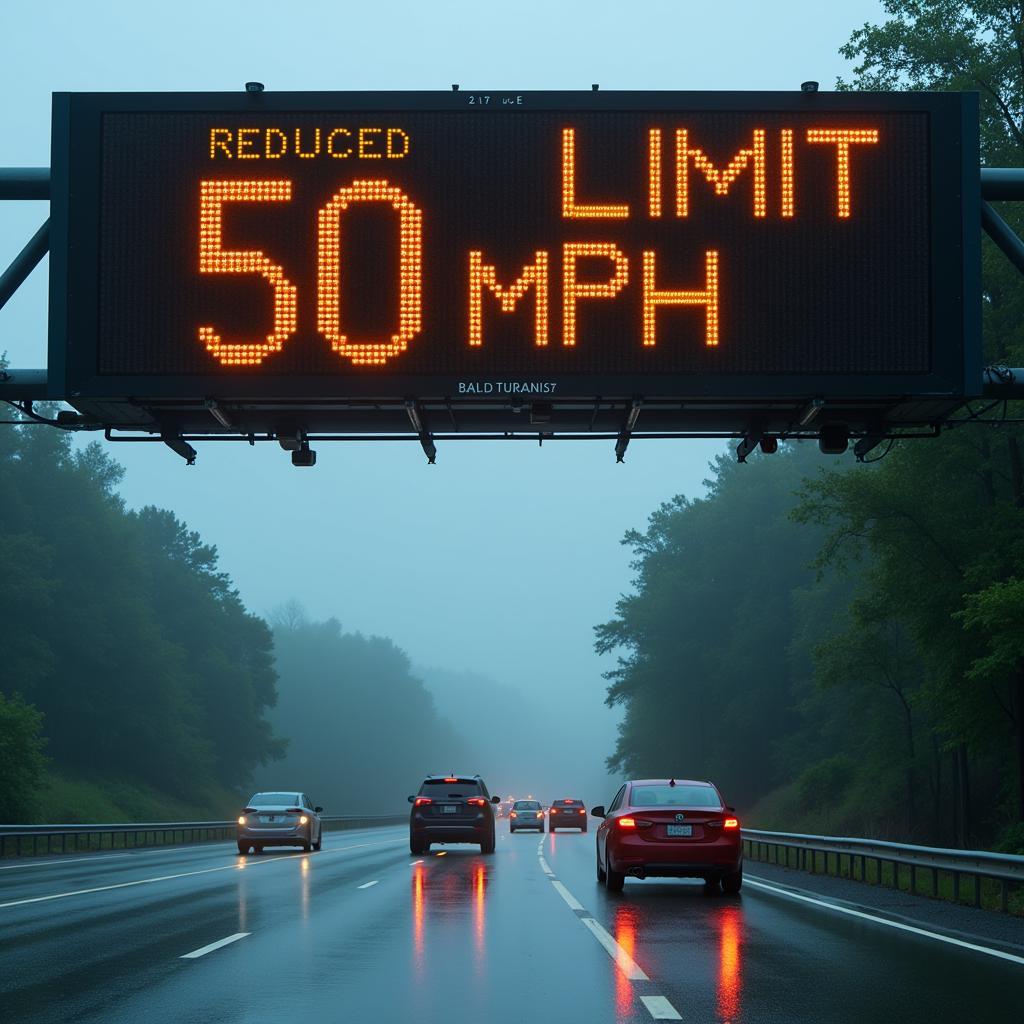Active traffic management (ATM) signs are a crucial part of modern highway systems, designed to improve safety and optimize traffic flow. Using a combination of sensors, cameras, and variable message signs (VMS), ATM systems can adjust speed limits, warn of congestion, and even close lanes in real-time, responding to changing road conditions. But what do these signs mean for drivers, and how can understanding them lead to a safer and smoother journey?
Deciphering the Language of Active Traffic Management Signs
Unlike traditional static signs, ATM signs are dynamic, changing their message to reflect the current traffic situation. This dynamic nature can be confusing for drivers who are used to static signs. However, understanding the different types of ATM signs and their meanings can significantly enhance your awareness on the road.
Speed Limit Signs: Adjusting to Conditions
One of the most common types of ATM signs is the variable speed limit sign. These signs display speed limits that can change based on factors like traffic volume, weather conditions, and accidents.
 Variable Speed Limit Sign on Highway
Variable Speed Limit Sign on Highway
For instance, during peak hours, the speed limit might be reduced to prevent congestion and maintain a steady flow of traffic. Similarly, in foggy or icy conditions, the speed limit may be lowered to ensure safe driving distances. Always adhere to the displayed speed limit, even if it seems lower than usual, as it’s there to protect you and other drivers.
Lane Control Signs: Navigating Closures and Merges
Lane control signs are another crucial element of ATM systems. These signs use red “X” marks or green arrows to indicate lane closures, lane shifts, or open lanes.
 Lane Control Sign Indicating Lane Closure
Lane Control Sign Indicating Lane Closure
A red “X” above a lane means that lane is closed, and driving in it is prohibited. Green arrows, on the other hand, guide you towards open lanes. Pay close attention to these signs, especially in construction zones or during accidents, as they provide crucial information for safe navigation.
Message Signs: Staying Informed on the Road
Variable message signs (VMS) are large electronic signs that display real-time traffic information, warnings, and instructions. They serve as a communication hub between the ATM system and drivers.
VMS can display a variety of messages, including:
- Traffic congestion warnings: These messages alert you to slowdowns, accidents, or road closures ahead, allowing you to adjust your route or driving behavior.
- Estimated travel times: Some VMS provide estimated travel times to key destinations, helping you plan your journey and anticipate delays.
- Weather alerts: In case of fog, ice, or strong winds, VMS can display warnings and advise drivers to exercise caution.
Always heed the information displayed on VMS as it provides crucial insights into the current road conditions and potential hazards.
The Role of Technology in Active Traffic Management
The effectiveness of ATM systems relies heavily on advanced technology. Sensors embedded in the pavement collect data on traffic volume and speed, while cameras provide real-time visuals of road conditions. This information is then relayed to a central control system where it is analyzed to determine the appropriate actions.
The control system then utilizes VMS and lane control signs to communicate necessary information and instructions to drivers. This intricate network of technology ensures a proactive approach to traffic management, enhancing safety and optimizing traffic flow on our highways.
Navigating the Future of Driving: Active Traffic Management and You
Active traffic management signs, though seemingly complex at first glance, are designed with driver safety and convenience in mind. By understanding their purpose and the information they convey, you can confidently navigate highways equipped with ATM systems. Remember to stay alert, observe all signs, and adjust your driving accordingly. As technology continues to advance, ATM systems will play an even greater role in creating a safer and more efficient driving experience for everyone.
